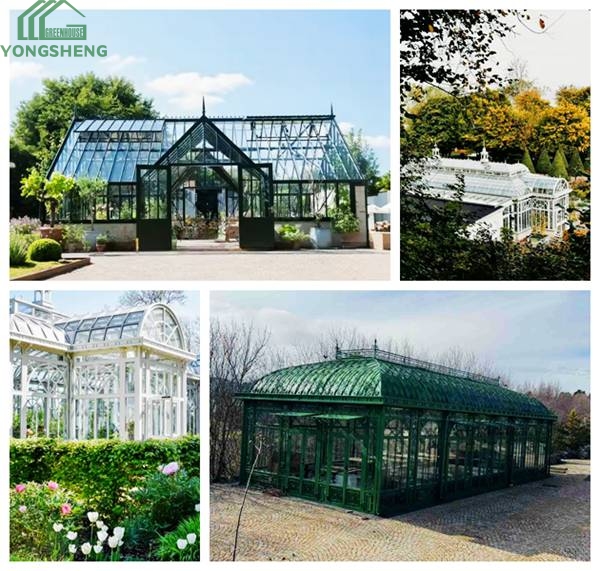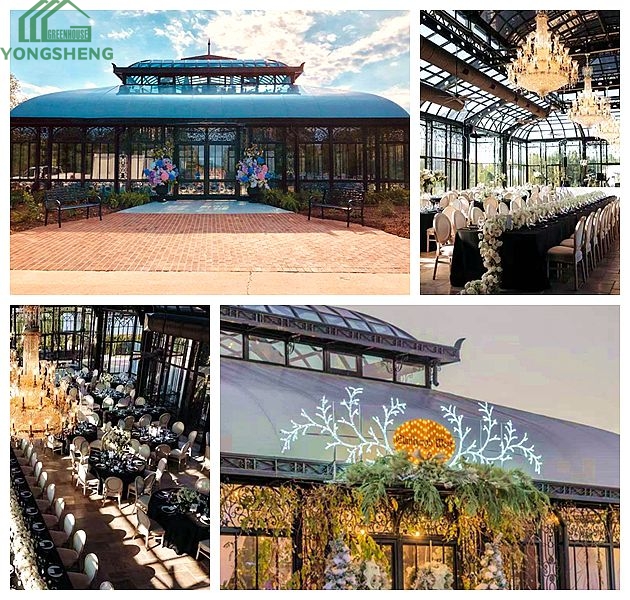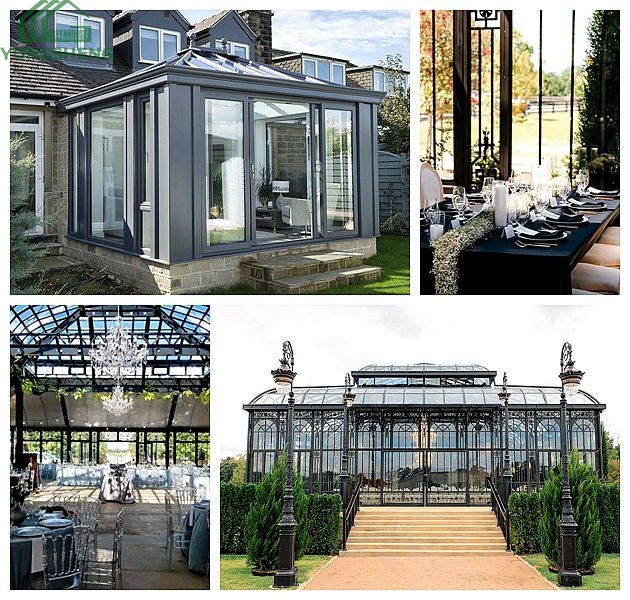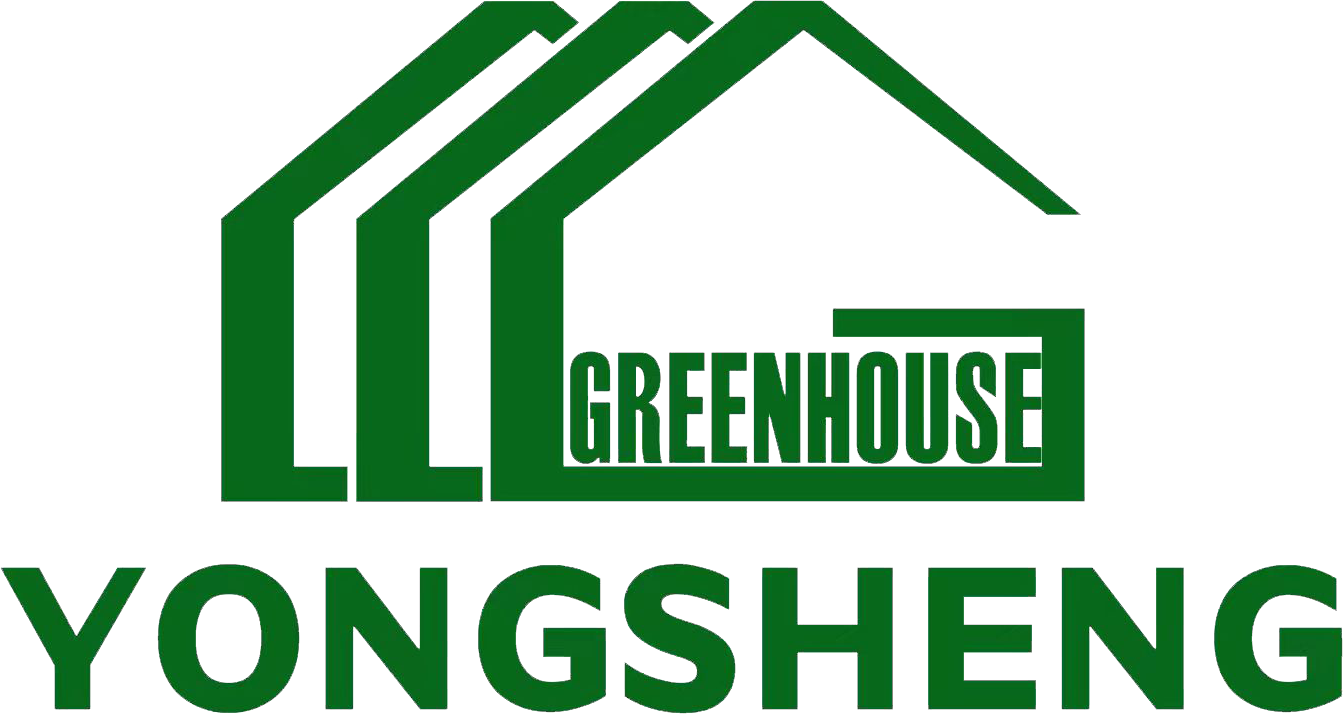
From the Past to the Present: The Evolution and Design Styles of Victorian Greenhouses

The Victorian greenhouse, a symbol of elegance and innovation, has captivated garden enthusiasts and architects for centuries. With its intricate designs, ornate details, and timeless appeal, the Victorian greenhouse is more than just a structure—it’s a piece of history that continues to inspire modern design. From its origins in 19th-century England to its contemporary adaptations, the Victorian greenhouse has evolved while retaining its classic charm. This blog explores the journey of the Victorian greenhouse, its design evolution, and how it remains a beloved feature in gardens and homes today.
1. The Origins of the Victorian Greenhouse
The Victorian greenhouse emerged during the reign of Queen Victoria (1837-1901), a period marked by industrial advancements and a fascination with nature and exploration. The Industrial Revolution brought innovations in iron and glass production, making it possible to construct large, ornate glass structures. These greenhouses became a status symbol for the wealthy, who used them to cultivate exotic plants brought back from British colonies.
Key Features of Early Victorian Greenhouses:
- Cast-Iron Frames: Durable and decorative, often featuring intricate scrollwork and floral motifs.
- Peaked or Curved Roofs: Designed to allow maximum sunlight and efficient rainwater drainage.
- Large Glass Panels: Enabled ample light penetration, essential for growing delicate plants.
- Ornamental Details: Decorative finials, cresting, and arched windows added a touch of grandeur.
Victorian greenhouses were not just functional spaces but also architectural masterpieces that reflected the era’s love for beauty and nature.
2. The Evolution of Victorian Greenhouses
Over time, the Victorian greenhouse has adapted to changing tastes, technologies, and lifestyles. While the classic design elements remain influential, modern interpretations have introduced new materials, functionalities, and styles.
2.1 The Transition to Modern Materials
Traditional Victorian greenhouses relied on cast iron and wood, but modern versions often use aluminum or steel for frames. These materials are lighter, more durable, and require less maintenance, making them ideal for contemporary gardens.
2.2 Simplified Designs
While ornate details are a hallmark of Victorian greenhouses, modern designs often feature cleaner lines and simpler aesthetics. This minimalist approach appeals to those who appreciate the elegance of the Victorian style but prefer a more understated look.
2.3 Multi-Functional Spaces
Today’s Victorian greenhouses are not just for growing plants. They serve as versatile spaces for relaxation, entertainment, and even work. From cozy reading nooks to home offices, the modern Victorian greenhouse is a blend of beauty and practicality.
3. Design Styles of Victorian Greenhouses
The Victorian greenhouse is characterized by its distinctive design elements, which can be adapted to suit various tastes and settings. Here are some popular styles:
3.1 Classic Victorian Style
This style stays true to the original designs, featuring ornate ironwork, curved roofs, and decorative details. It’s perfect for traditional gardens or historic homes, adding a touch of old-world charm.
3.2 Modern Victorian Style
A contemporary take on the classic design, this style incorporates sleek materials like aluminum and tempered glass. The ornate details are often simplified, creating a fusion of vintage and modern aesthetics.
3.3 Rustic Victorian Style
For a more natural look, rustic Victorian greenhouses use wood frames and earthy tones. This style blends seamlessly with cottage gardens or rural settings, offering a cozy and inviting atmosphere.
3.4 Customized Victorian Style
Many homeowners today opt for customized designs that combine Victorian elements with personal preferences. This could include unique shapes, colors, or additional features like integrated seating or automated climate control.
4. Inspirational Ideas for Victorian Greenhouses
Whether you’re building a new greenhouse or renovating an existing one, here are some ideas to inspire your Victorian greenhouse project:
4.1 Create a Plant Paradise
Fill your greenhouse with lush greenery, from tropical plants to fragrant flowers. Use tiered shelving or hanging baskets to maximize space and create a vibrant, jungle-like atmosphere.
4.2 Design a Relaxation Retreat
Transform your greenhouse into a serene escape by adding comfortable seating, soft lighting, and cozy textiles. It’s the perfect spot to unwind with a book or enjoy a cup of tea surrounded by nature.
4.3 Incorporate Vintage Decor
Enhance the Victorian charm with vintage furniture, antique planters, and decorative accents like stained glass or wrought-iron lanterns.
4.4 Add Functional Features
Modernize your greenhouse with practical additions like automated watering systems, heating, or shading. These features make it easier to maintain your plants and enjoy the space year-round.
5. The Timeless Appeal of Victorian Greenhouses
What makes Victorian greenhouses so enduringly popular? It’s their ability to combine beauty, functionality, and a connection to nature. Here’s why they remain a favorite among gardeners and homeowners:
- Aesthetic Appeal: The intricate designs and elegant proportions make Victorian greenhouses a stunning focal point in any garden.
- Versatility: They can be used for growing plants, entertaining guests, or simply enjoying the beauty of nature.
- Historical Significance: Victorian greenhouses are a nod to a bygone era, offering a sense of nostalgia and timeless elegance.
- Customization Options: With endless design possibilities, you can create a greenhouse that reflects your personal style and needs.
6. How to Create Your Own Victorian Greenhouse
If you’re inspired to build or restore a Victorian greenhouse, here are some steps to get started:
6.1 Choose the Right Location
Select a spot that receives ample sunlight and complements your garden’s layout. Consider factors like accessibility, drainage, and proximity to utilities.
6.2 Select Materials and Design
Decide whether you want a traditional cast-iron structure or a modern aluminum frame. Work with a designer or architect to create a plan that balances aesthetics and functionality.
6.3 Add Personal Touches
Incorporate decorative elements like finials, cresting, or stained glass to enhance the Victorian charm. Choose plants and furniture that reflect your personality and lifestyle.
6.4 Maintain Your Greenhouse
Regular maintenance is key to preserving the beauty and functionality of your greenhouse. Clean the glass, inspect the frame for rust or damage, and ensure proper ventilation and temperature control.
Conclusion: A Timeless Treasure for Modern Gardens
From its origins in the 19th century to its modern adaptations, the Victorian greenhouse has stood the test of time as a symbol of elegance and innovation. Whether you’re drawn to its historical charm or its practical versatility, a Victorian greenhouse is a worthwhile investment that brings beauty and joy to any space. By blending classic design elements with contemporary features, you can create a greenhouse that honors the past while meeting the needs of the present. Let the Victorian greenhouse inspire you to cultivate a space where nature, history, and modern living come together in perfect harmony.
Keywords Integration:
- Victorian greenhouse: A classic structure known for its ornate design and historical significance.
- Greenhouse Victorian: Refers to the traditional style of greenhouses popular during the Victorian era.
- Victorian style greenhouse: A modern interpretation of the classic design, blending vintage elements with contemporary features.
This blog highlights the evolution and enduring appeal of Victorian greenhouses, offering inspiration and practical tips for creating your own timeless sanctuary.
Why Choose US?
- ● As the first manufacturer in China to introduce the Victorian conservatory design from Europe, we have 36 years of production experience since 1988, and our products are distributed in 68 countries.
- ● We have a professional team of 8 conservatory design engineers and 60 production workers. We are equipped with 2 hot-dip galvanizing machines, 2 steel shot blasting machines, and 1 spray line.
- ● Our professional design team can provide theoretical calculation data support for wind pressure resistance, earthquake resistance, and snow resistance of large-scale steel structure conservatories.
- ● Strict quality control. 8 inspection stages: raw material inspection, cutting and blanking size inspection, welding quality inspection, hot-dip galvanizing quality inspection, spray quality inspection, assembly quality inspection, and packaging quality inspection. Ensuring smooth assembly of the products, no rust, no leakage, and compliance with customer national standards.
- ● We cooperate with many well-known architectural design companies worldwide.
- ● Customized services. We can customize according to customer designs and dimensions. We also provide supporting facilities such as electric sunshades and air conditioners.
- ● We offer installation dispatch services, inspection services, and free replacement of parts. We also present high-value exquisite gifts.
- ● Video factory tour. You can view the entire production process.




